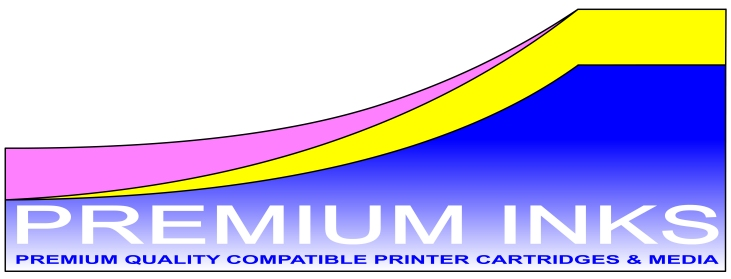Epson printers have been a long time favourite of the refilling community. Their print heads are usually built onto the printer carriage, meaning separate ink tanks can be refilled or replaced in their printers.
Epson printer prices are cheaper now due to mass produced parts, and clever efficient manufacturing. While a basement model would have cost over £100 in 1997, the current Epson Expression Home XP-245 sells for less than £50! I know this from personal experience as my first Inkjet printer was the Epson Stylus Color 640.
The Stylus Color 640 was a robustly constructed, weighty printer that used T050 Black and T052 Colour cartridges. The Black Cartridge didn't have the same capacity as the larger T051 that was used in the slightly more expensive Color 760, but it was large enough to print 150 pages of mono graphics. I seem to remember that the original Epson T050 Black Cartridges cost around £8 and the Colour ones approximately £10. I used the printer for printing flyers and invoices, and soon realised that my business didn't have the resources to use genuine ink cartridges. Fortunately I read an advertisement in a magazine promoting less than half price compatible cartridges. I began to order these regularly, and as a result we significantly reduced our operating costs.
Some of the disadvantages of the Stylus Color 640 were that is was relatively slow to print, and rather noisy to use. The printer could take an hour to print thirty A4 sheets of graphics on the medium quality setting. The printer heads would regularly block, but fortunately it was always possible to unclog them using the Epson head cleaning utility. Eventually after thousands of sheets of printing, two continuously flashing lights appeared on the case and refused to go away. I was unaware at the time of a reset utility which could have been downloaded in-order to fix the problem! So a perfectly good printer was scrapped because of the duty cycle counter. Some years later I bought the same model printer at a car boot sale for only £3. Remaining fully functional, but currently sitting in our store room gathering dust.
My second printer was an Epson Stylus C42. A lighter and cheaper printer, and one of the first to use the intellichip. This new microchip was a game changer for the refilling community. Compatible cartridges were not available for the new Epson models, and the printers would not recognise refilled cartridges. That was until Jettec began to sell starter cartridges that came with a chip resetter, which would reset the original Epson chip and a chip holder that would clip on to the new compatible cartridge. This system was eventually replaced by the first generic cartridges fitted with compatible microchips.
One of my favourite printers was an Epson Stylus Photo R200. Costing around £100, this machine was extremely well designed and constructed. Using six separate cartridges (T0481-6) instead of the previous status quo of two, the R200 increased the colour gamut adding Photo Cyan and Photo Magenta to the mix. The printer produced good quality text, graphics, and pictures.
Around this time the continuous ink supply systems became popular with refillers. It was now possible to have a large ink tank sitting next to your printer with silicone tubes going to the cartridges. These cartridges had the first type of auto reset chips fitted, meaning that it was not usually necessary to remove the cartridges from the printer. This ink system provided the ideal solution for cheap printing. Particularly as the Epson Stylus Photo R200 machines were well constructed and built to last. After several years of good service, my R200 printer developed a common intermittent paper feed fault.
The Epson Stylus CX3200 was one of the first Multi-Function printers sold for the home user. Combining a scanner and copying facility turned out to be a popular decision, and became the most popular machine style. Unfortunately for CISS users there was nowhere for the silicone tubes to go! The scanner lid had to be closed before the printer would print. The most common solution to this problem was to make a hole in the case, but this kind of work was too hard for the average printer owner. Fortunately compatible T040 Black and T041 Colour cartridges contained a generous amount of ink and could be cheaply purchased.
The eventual replacement for the R200 and R220 printers was the Epson Stylus Photo R285. With a similar style and still offering CD/DVD printing, it soon became evident that the body and parts were of a lighter construction than the R200. Apart from the slightly improved image quality, the R285 heralded an overall backwards step from the previous series printers. The R285 would often detect the presence of a fitted CISS system if the silicone tubes were not exactly in position. Refillable ink cartridges to replace T0801-6 became the preferred choice.
The Epson Stylus DX4000 later became one of the most popular printers in the United Kingdom. Unfortunately the scanner lid made using a continuous ink supply system problematic, so T0711-4 refillable Cartridges were the top choice for refilling. They were, and still are fitted with stable ARC chips, and hold around 13ml of ink. They remain a popular selling item, meaning that the Epson printers manufactured around this time were generally well constructed. Print quality was decent, if not spectacular.
Part 1, Part 2, Part 3, Part 4, Part 5, Part 6
All brand names & trademarks are the properties of their respective holders and are referred to here solely for descriptive purposes only. (Non OEM - Not made by Epson).
